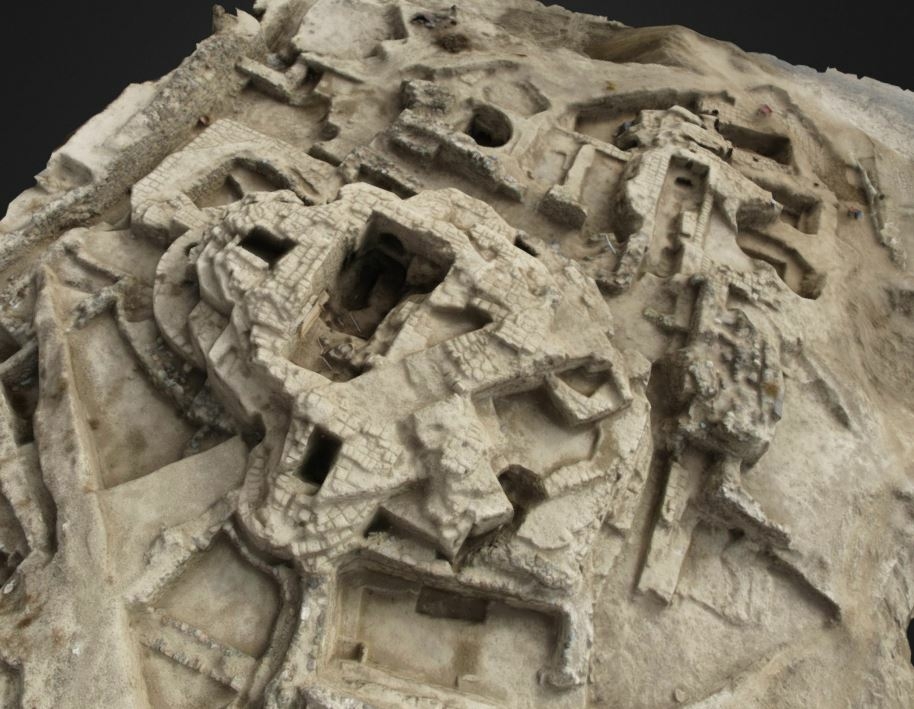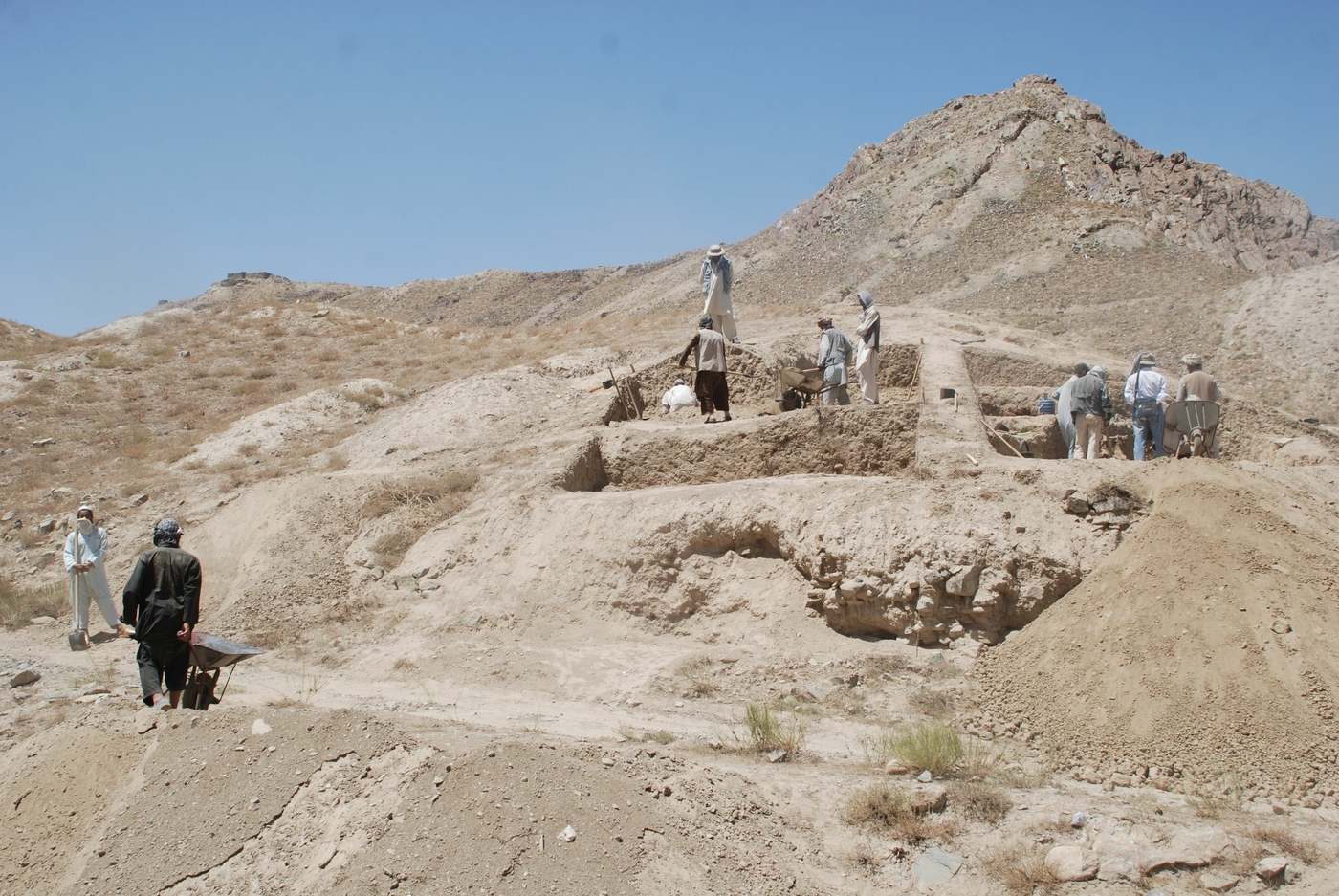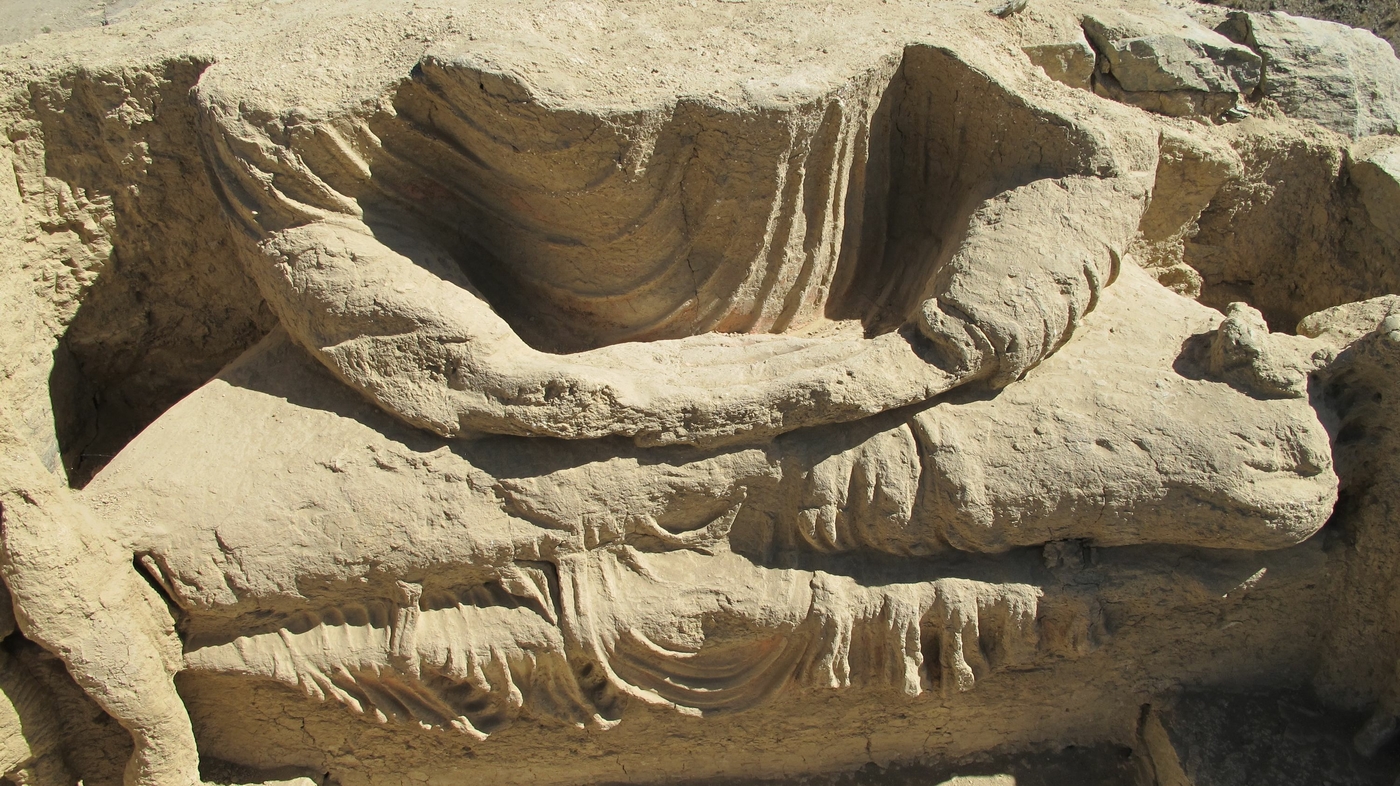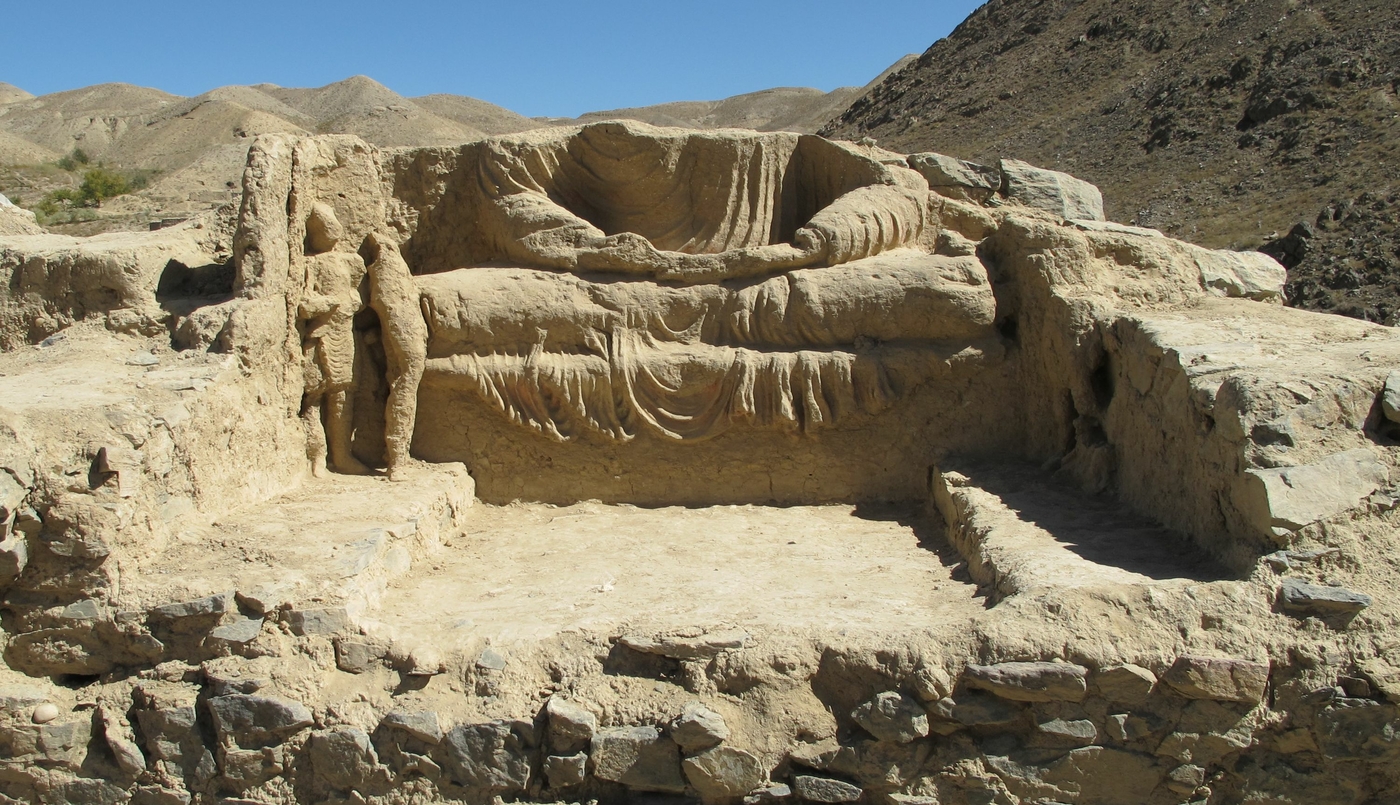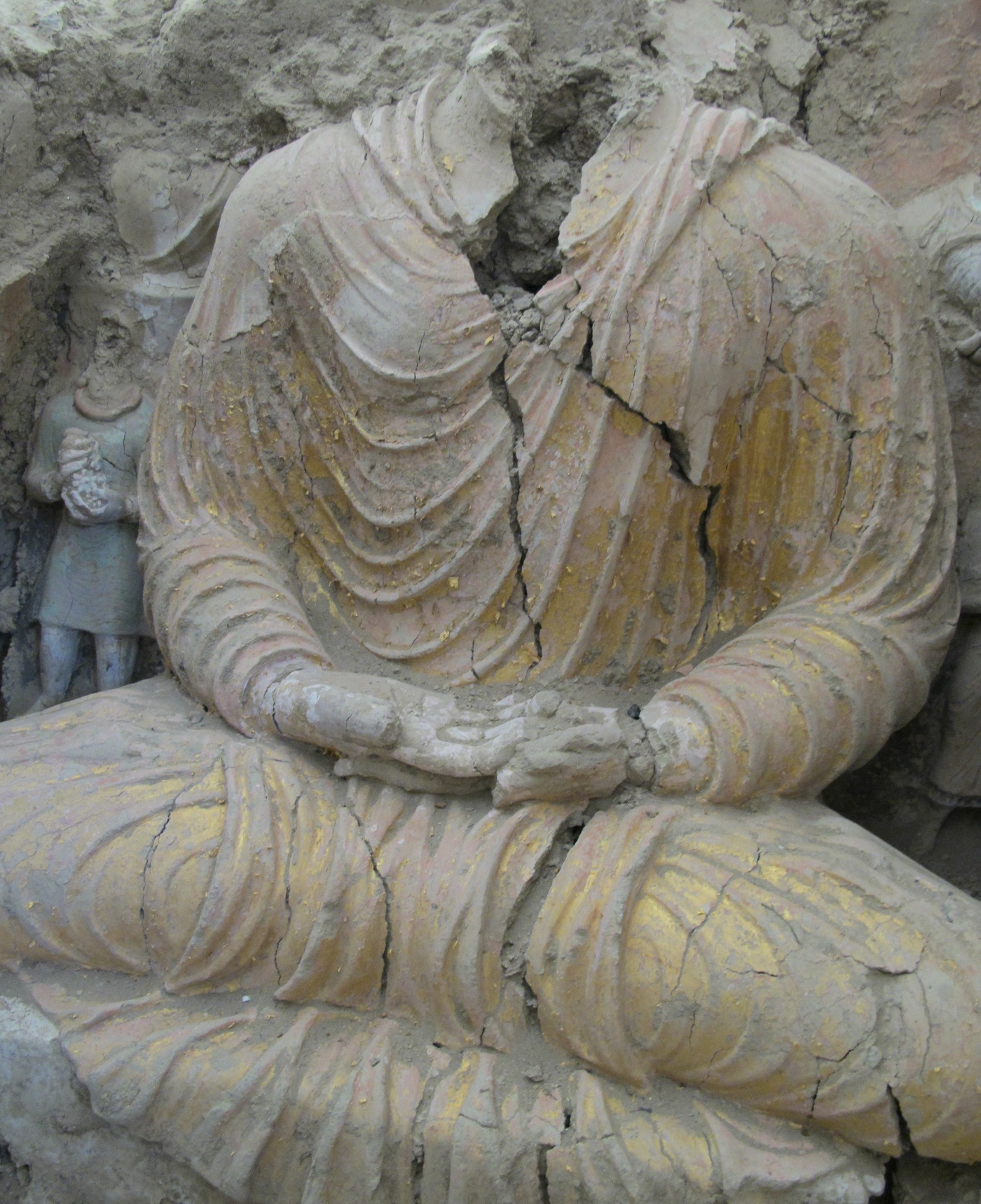Mes Aynak
Mes Aynak, a few dozen kilometres to the south of Kabul, has been excavated since 2009 and has already turned out to be a major site for understanding the development of Buddhism in Afghanistan and the interactions between the monastic communities and local political and economic life.
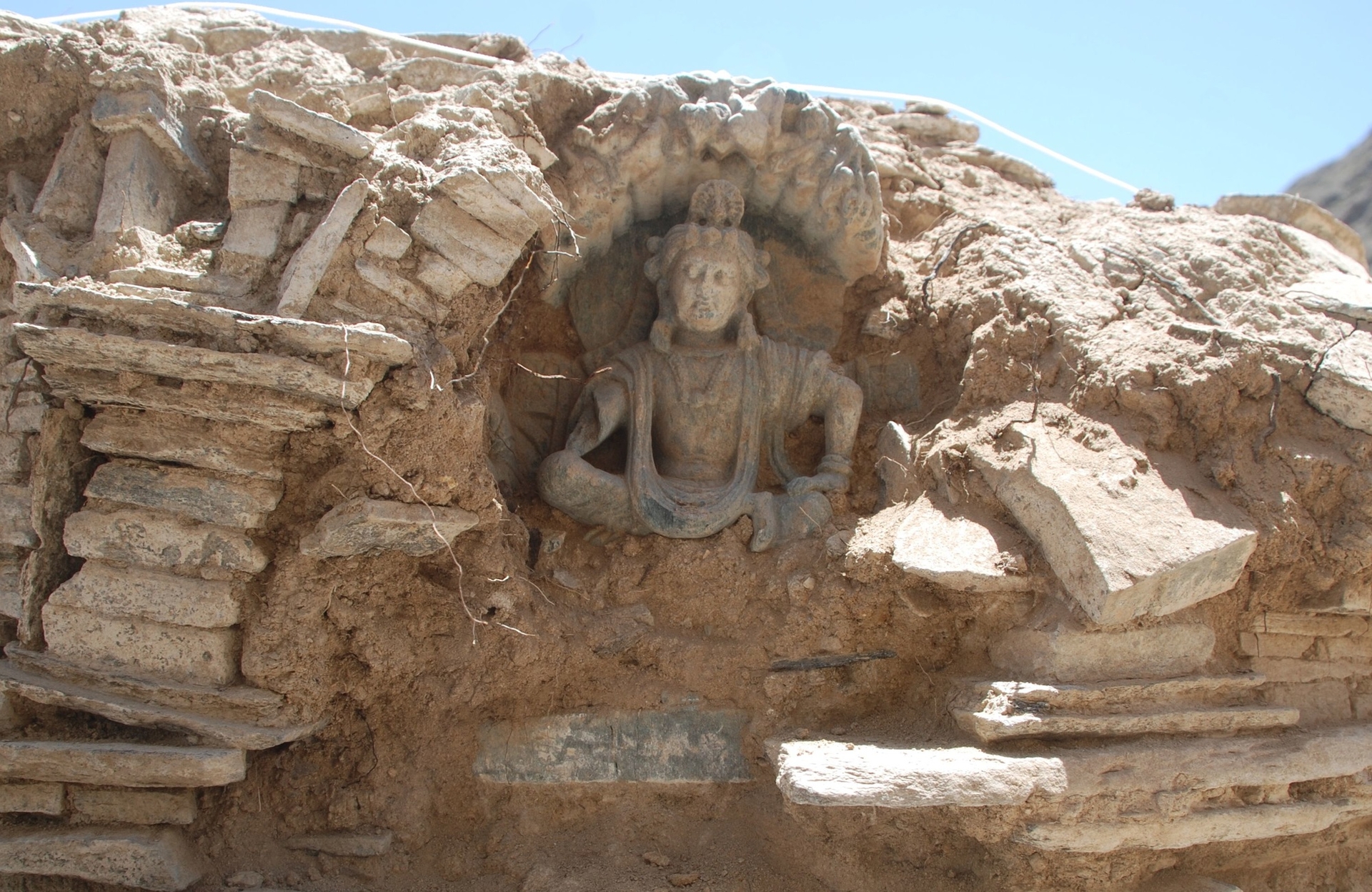
A site discovered in the 1960s
Forty kilometres to the south of Kabul in Logar Province, the site of Mes Aynak was first identified in 1960 by the French geologist Albert de Lapparent who reported the existence, on this rich copper ore deposit, of the remains of ancient constructions probably dating to the first centuries CE. In 1977 archaeologists and geologists from the CNRS had the opportunity to revisit the site and to confirm this initial analysis.
The copper mining venture planned by a Soviet company in the late 1970s was delayed due to the unstable security situation affecting this region from 1979 to 2001. It was also during this period that the site was first looted, an activity that continued until the site was secured prior to the launch of mining operations under a concession awarded to a Chinese company in 2008.
A vast mining and monastic complex
Identified over an area of 4 km2, the site of Mes Aynak is built around a rocky promontory, the Kouh i Baba Wali, corresponding to the area where the copper ore deposits were easiest to reach. Probably from the Bronze Age and certainly from the 1st century BCE, the mining of ore was carried out alongside the transformation and metalworking of copper. It appears to have grown steadily until the 7th century CE., when it came to a complete halt.
In addition to this craft activity, at least from the 1st century CE, Buddhist monasteries, generally fortified, were built around the mining area, along with chapels and other buildings whose use remains uncertain, at the heart of the mine. The mine was protected by a rampart consisting of a fortified redoubt that appears to have been the centre of the ancient settlement.
A striking example of the artistic and material culture of the first centuries CE in Afghanistan
The excavations carried out in 2009 by the Afghan Institute of Archaeology proved to be a rich source of archaeological materials. They included several thousand unfired mud statues of Buddhas, bodhisattvas and pilgrims, as well as fragments of a statue of the Indian goddess Durga. Archaeologists also found a large number of stone and metal statues along with many wall paintings shedding light on an original aspect of Kushan and Kushan-Sasanian artistic traditions.
Thanks to the good conservation conditions, several wooden statues and furniture and building frames also survive. The environment was also favourable to the conservation of manuscripts on birch bark, some relating to well-known Buddhist sutras, including the Diamond Sutra. Excavators also uncovered a large volume of numismatic material, some of which was produced in a monetary workshop at Mes Aynak, the remains of which have been identified, and deposits of silver Sasanian coins along with a few gold Kushan coins.
Archaeologists are expected to continue excavating the site over the coming years.


